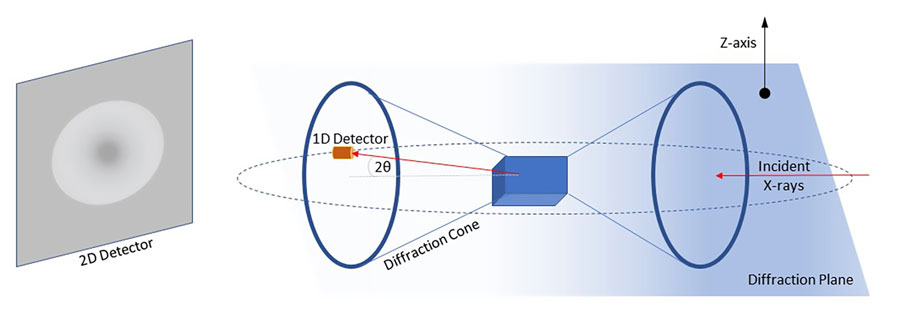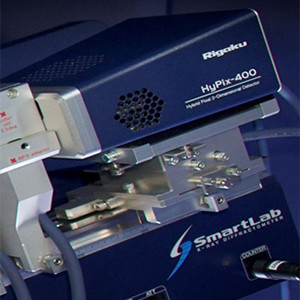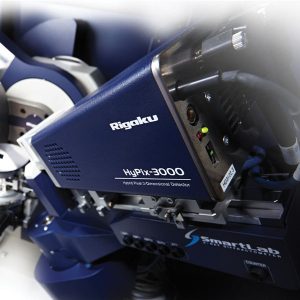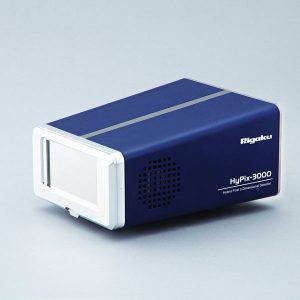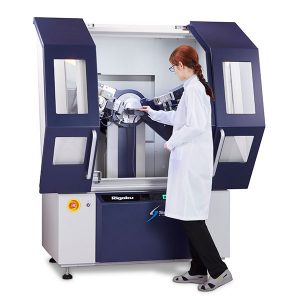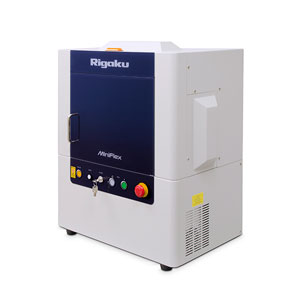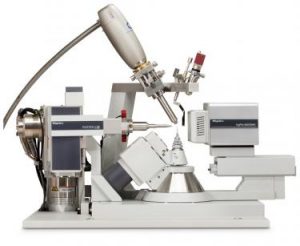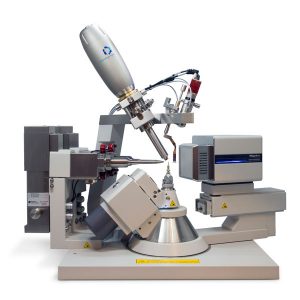Hybrid Photon Counting Detectors – High Performance X-Ray Detectors
by Dr. Cameron Chai
Hybrid Photon Counting detectors (HPC), also known as Hybrid Pixel Array Detectors (HPAD) are next generation semiconductor detectors that directly measure all photons generated by your samples. They also enable collection of far more detailed information compared to more conventional 1D data sets. Detectors like the HyPix range from Rigaku also offer the ability to measure in 0D, 1D and 2D modes with the click of a button, i.e. no hardware adjustments.
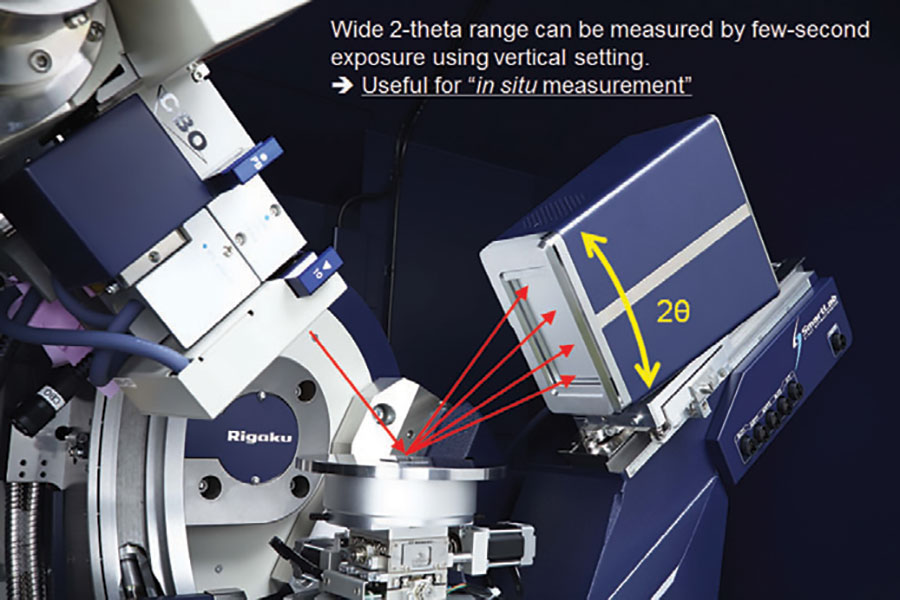
Figure 1. HyPix HPC detector on Rigaku Smartlab XRD.
The ability to switch seamlessly between 0D, 1D and 2D modes offers users the ultimate flexibility. Using instruments like the SmartLab diffractometer, operators can easily switch between various measurement modes such as conventional powder, SAXS, microdiffraction etc. In powder diffraction, uses can use the HyPix detector in 2D mode to carry our very rapid scans and then switch to 0D mode to scan specific areas for optimal resolution. That said, the HyPix 3000 on the SmartLab diffractometer is suitable for performing HRXRD experiements in 2D mode based on its low FWHM.
HPC detectors have also become more common place being coupled with higher flux X-ray sources and computers that are better able to cope with larger data sets and more complex analyses.
These detectors are the benchmark for laboratory systems with the technology even extending into synchrotron applications. Their operation and advantages are discussed herein.
Operation of Hybrid Photon Counting Detectors
Most modern 2D detectors to date have been of the CCD (Charge-Coupled Device) or CMOS (Complementary Metal-Oxide Semiconductor) types, also known as Integrating Detectors. These measure photons indirectly by using a scintillator to convert X-ray photons to visible light. The light is then transferred to the CMOS or CCD chip via a fibre optics taper or stub.
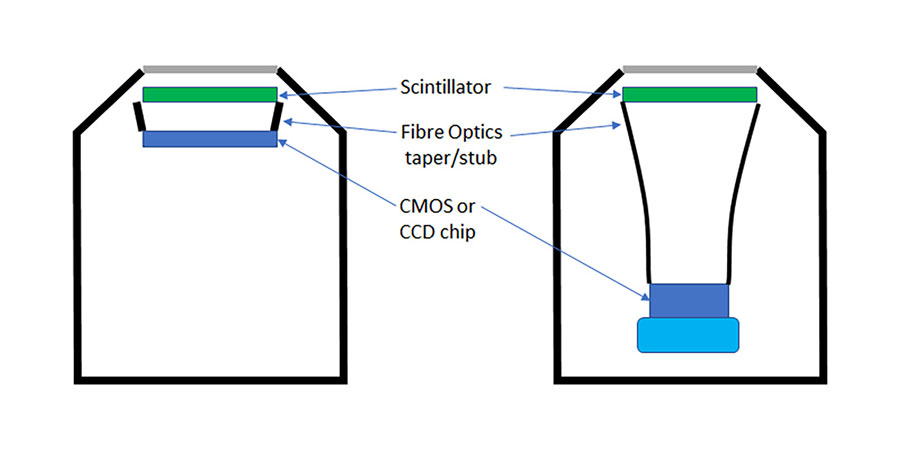 Figure 2. CMOS and CCD 2D detectors.
Figure 2. CMOS and CCD 2D detectors.
HPC detectors on the other hand directly convert photons into electric charge and count each one immediately. Furthermore, they are event driven, meaning that they simply count each individual photon and do not accumulate any noise.They also incorporate energy discrimination to prevent any possible charge sharing between adjacent pixels, ensuring maximum accuracy.
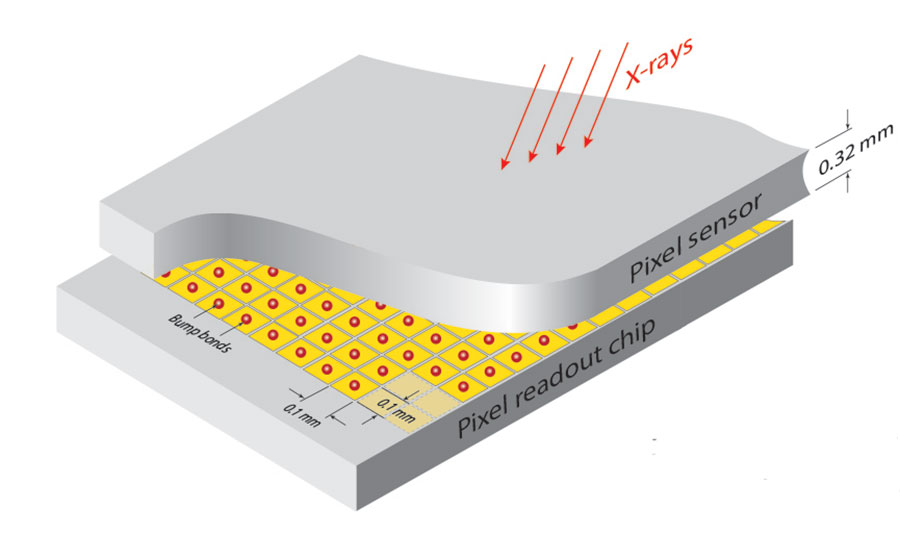 Figure 3. Schematic of a HPC detector.
Figure 3. Schematic of a HPC detector.
Advantages of Hybrid Photon Counting Detectors
With 1D Silicon Strip Detectors (SSD), the detector is restricted in that it can only detect diffracted X-rays in a single plane. For polycrystalline materials, X-rays are diffracted in cones. 2D detectors overcome this problem and are only limited by their size and position which allows them to detect the entire or significant portions of the Debye-Scherrer diffraction cones simultaneously.
For powder diffraction is is widely accepted that fine particles randomly oriented will produce the best data. These will generate a pattern like the 30µm silica pattern (figure 5 (top)).
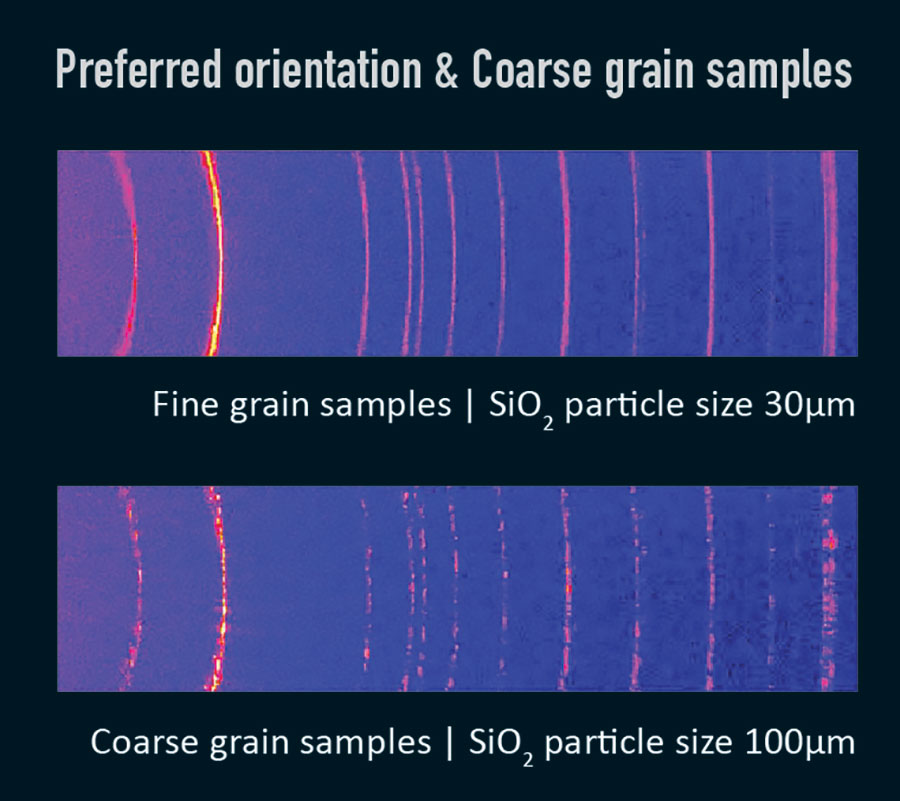
Figure 5. HPC detectors minimise the effect of gran size and orientation.
However, this is not always possible, in which case 2D detectors like the Rigaku HyPix range are better able to deal better with a wider range of samples. Samples with coarser particles sizes, with higher degress of orientation or texture can produce broken or spotty Debye-Scherrer rings (figure 5) which can be missed by 1D detectors. 2D detectors look at the whole or significant parts of the ring and integrate intensity data across them reducing the effects of these phenomena.
Also, with larger active detector areas, small pixel sizes (and excellent spatial resolution), higher count rates, fast readout speed, no point spread and zero dead time, these detectors are also able to collect much faster than 1D detectors, with high levels of accuracy. So on top of collecting more accurate data, you can increase your sample throughput, thus fast tracking your research.
From an instrument design perspective, they also have the advantage that they can be air-cooled and hence do not require any water cooling or gas exchange as may be the case for other technology of detectors.
Application Advantages of Hybrid Photon Counting Detectors
In practice, HPC detectors will benefit users in specific applications such as:
- Phase identification Improved intensity statistics are generated for a given 2? range which also aids in quantitative analysis especially with highly textured or large-grained samples
- Crystallinity Faster and more accurate analysis
- Thin Film Better able to detect various phaeses simultaneously for in films which may be mixtures of single crystal, polycrystalline and highly textured
- Texture Very fast measurements are possible. This allows specific areas of interest to be readily located for pole figure analysis
- Stress By measuring larger segments of the Debye ring, higher accuracy data can be collected at higher speeds.
- SAXS Data can be collected more quickly and single exposure generates data to be able to map the the samples structure
- Microdiffraction Data captures with high speed and precision, again integrating over portions of the Debye-Scherrer cone minimising the effect of spotty, textured or weakly diffracting rings
Summary
HPC detectors are the the optimal hardware partner for researchers involved in diffraction experiments. By combining ultimate flexibility, with data collection speed and accuracy, they partner with other components like high flux X-ray sources to generate high quality information with next to zero noise. In doing so, you have the ideal configuration to analyse your materials quickly and accurately, providing the next best solution to synchrotrons.
This article was published in the AXAA, Australian X-ray Analytical Association 2018, Issue 1, Newsletter.

